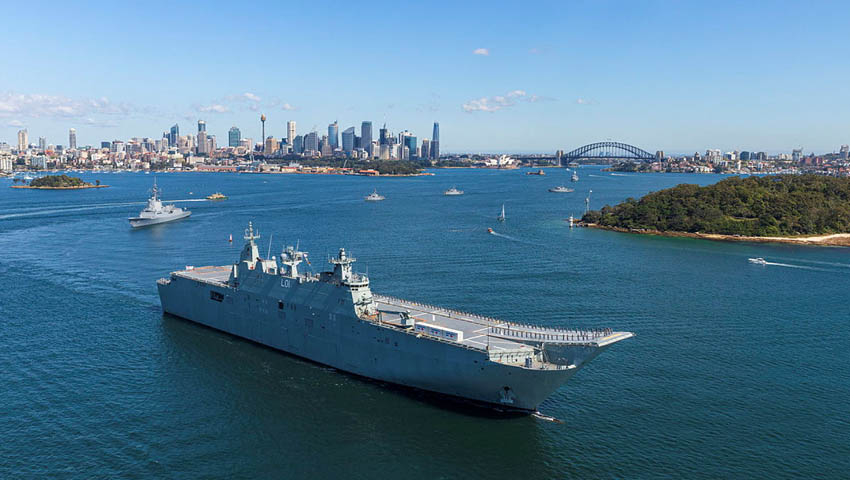A fleet of six Royal Australian Navy warships, including HMAS Adelaide and the fleet's newest destroyer HMAS Sydney, have departed Sydney Harbour in formation to complete a range of training, sea qualification and surveying tasks.
To continue reading the rest of this article, please log in.
Create free account to get unlimited news articles and more!
The ships were led by one of the fleet’s largest warships, HMAS Adelaide, followed by its newest ship, the destroyer HMAS Sydney - the formation was completed by three Huon Class ships, Huon, Gascoyne and Yarra, and the Anzac Class frigate Anzac.
Commander Surface Force Commodore Stephen Hughes said Navy continued to maintain a high tempo of operations throughout 2020, despite COVID-19.
“Six ships leaving Sydney Harbour in formation is a visual demonstration of our capability but also signals our readiness and capability to continue to meet all government-directed operations,” CDRE Hughes said.
Five of the six ships are home-ported in Sydney, while Anzac’s home port is in Western Australia.
Adelaide, Sydney and Anzac will be involved in various exercises and drills, including sea qualifications and work-ups to prepare for future deployments, while the three Huon Class ships will be collectively involved in survey work between Newcastle and Port Kembla.
Commanding Officer Adelaide Captain Jonathan Ley said the ship would conduct vital testing and preparations ahead of assuming duties as the high-readiness humanitarian and disaster response (HADR) vessel at the end of the month.
“Adelaide is sailing after a particularly busy and successful maintenance period with an immediate aim of setting to work, testing and proving all of her equipment, machinery and systems,” CAPT Ley said.
“The ship will then assume duties as the HADR vessel, to be used in the event of any contingency over the high-risk weather season in Australia and overseas.”
Adelaide is currently the Navy’s high-readiness vessel and is available to support humanitarian and disaster relief operations domestically and in the region.
The RAN's HMAS Adelaide (III) is the second Canberra Class amphibious assault ship (LHD), also known as a landing helicopter dock, provides the Australian Defence Force with one of the most capable and sophisticated air-land-sea amphibious deployment systems in the world.
These 27,000-tonne ships are able to land a force of over 1,000 personnel by helicopter and watercraft, along with all their weapons, ammunition, vehicles and stores.
The ships were constructed using the modular approach whereby the ship is divided into modules, which were built and fitted out as discrete units, before being welded together to form the completed ship. This allowed the ship to be built at a number of different sites across the shipyard before being brought together for final joining.
Construction of the hull to the level of the flight deck, including the majority of fitting out was undertaken at Navantia's Ferrol-Fene shipyard in north-west Spain. The hull was then shipped to BAE Systems' Williamstown shipyard in Victoria for the installation of the island structure. The island modules were constructed at a number of sites around Australia before they were moved to Williamstown for final installation on the flight deck.
The ships' roles are to:
- embark, transport and deploy an embarked force (Army in the case of the ADF but could equally be an allied army or marines), along with their equipment and aviation units; and
- carry out/support humanitarian missions.
The first LHD, HMAS Canberra, commissioned on 28 November 2014 and the second ship, HMAS Adelaide, commissioned on 4 December 2015.

 Login
Login







